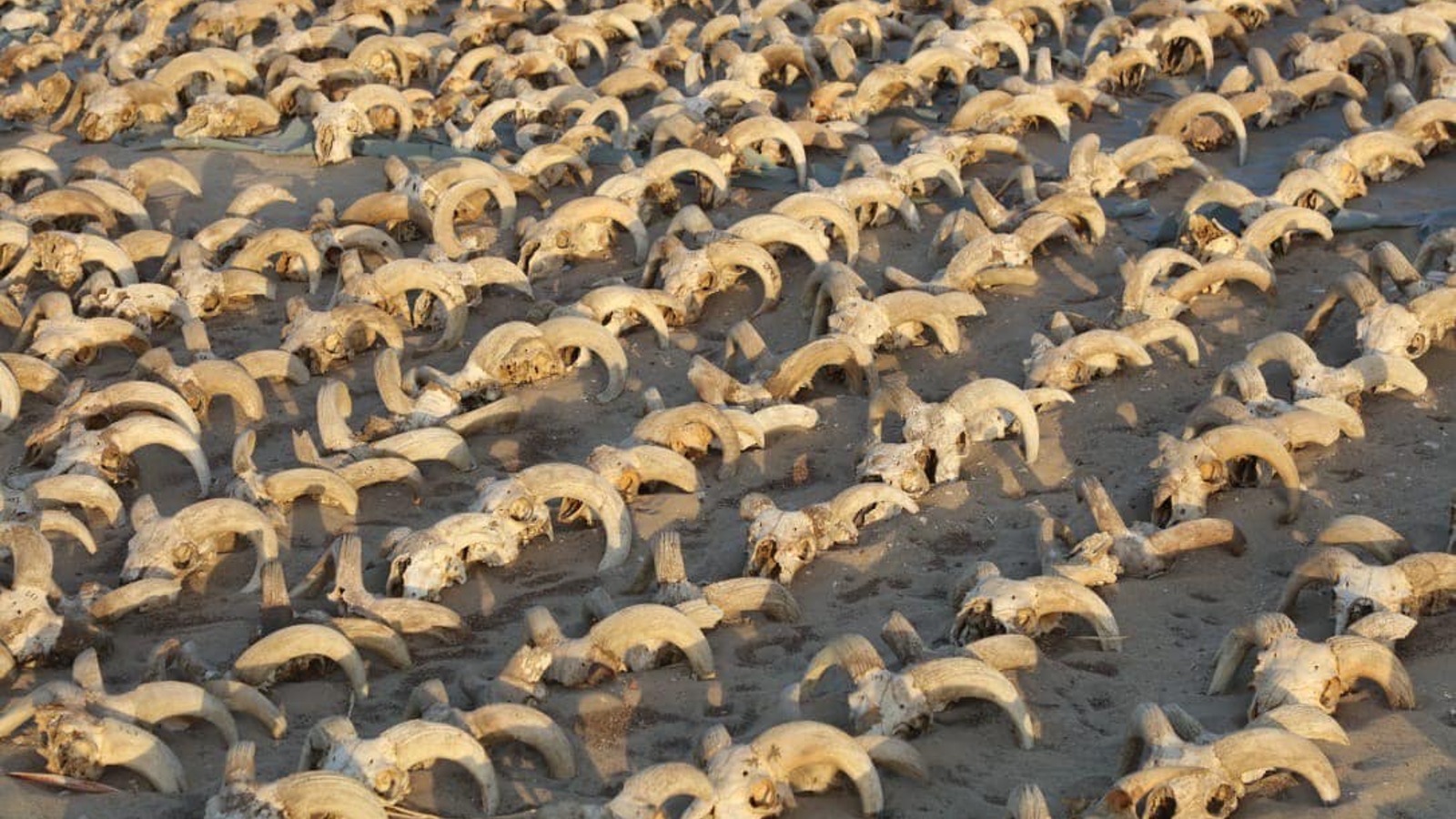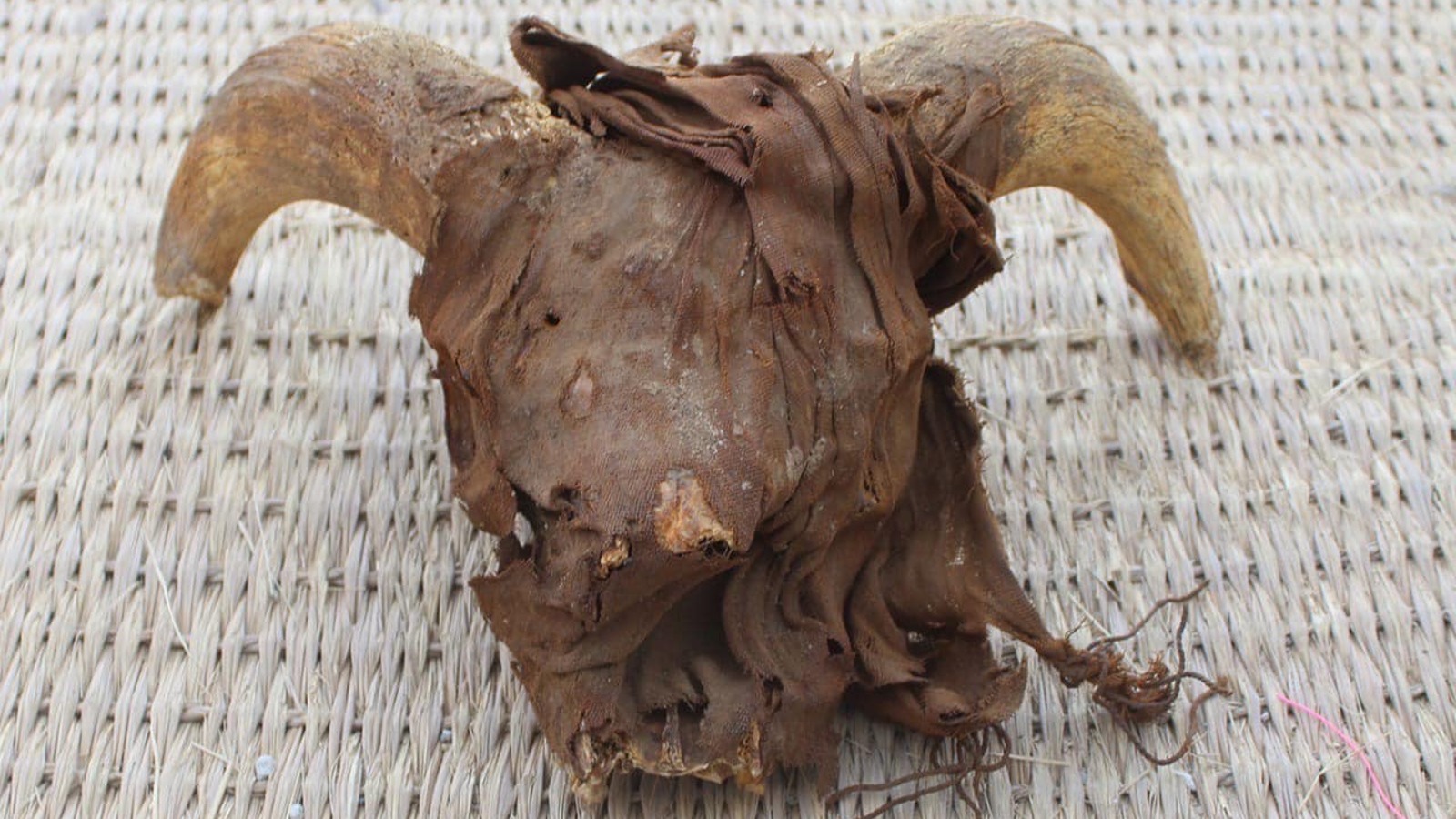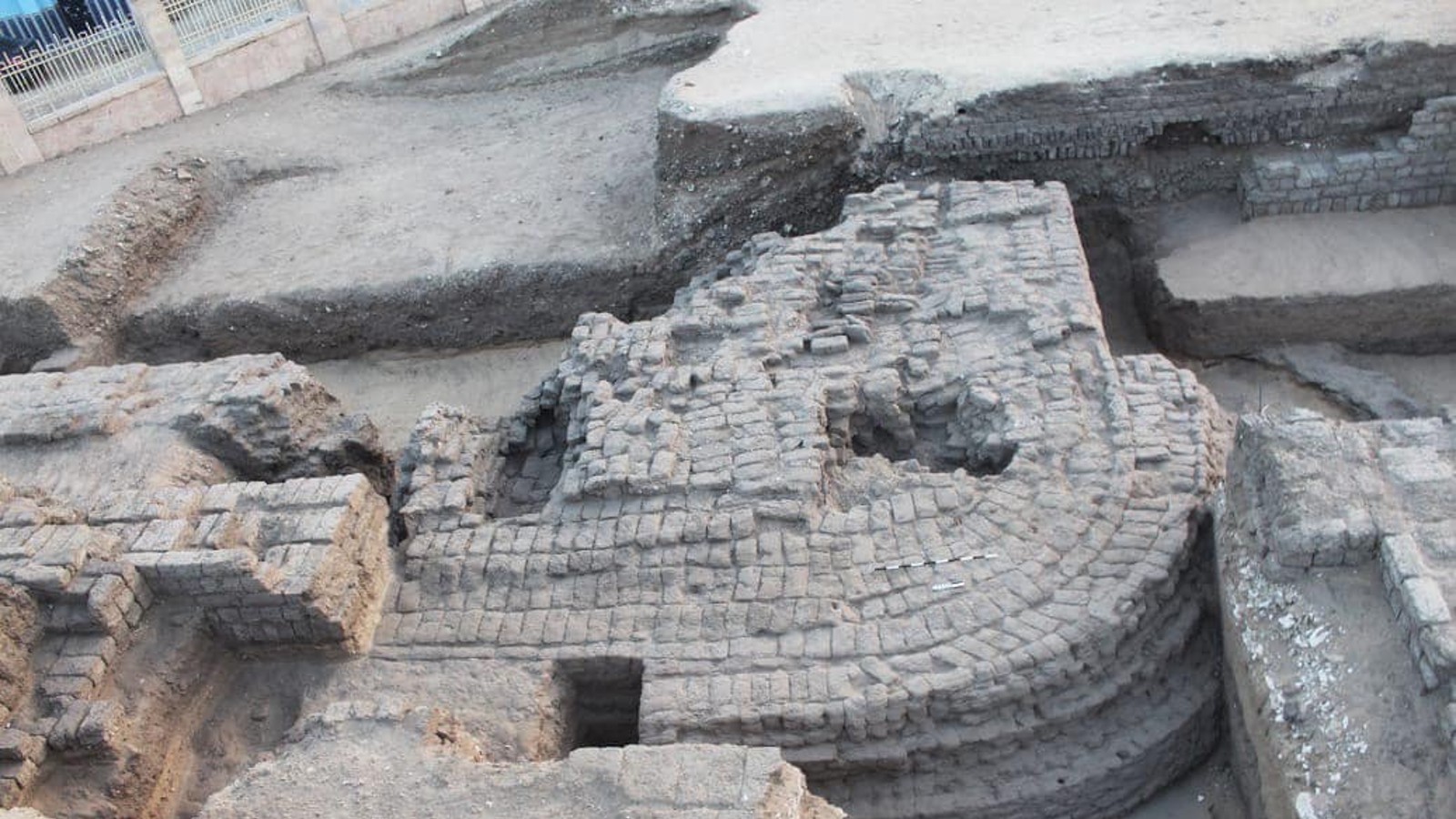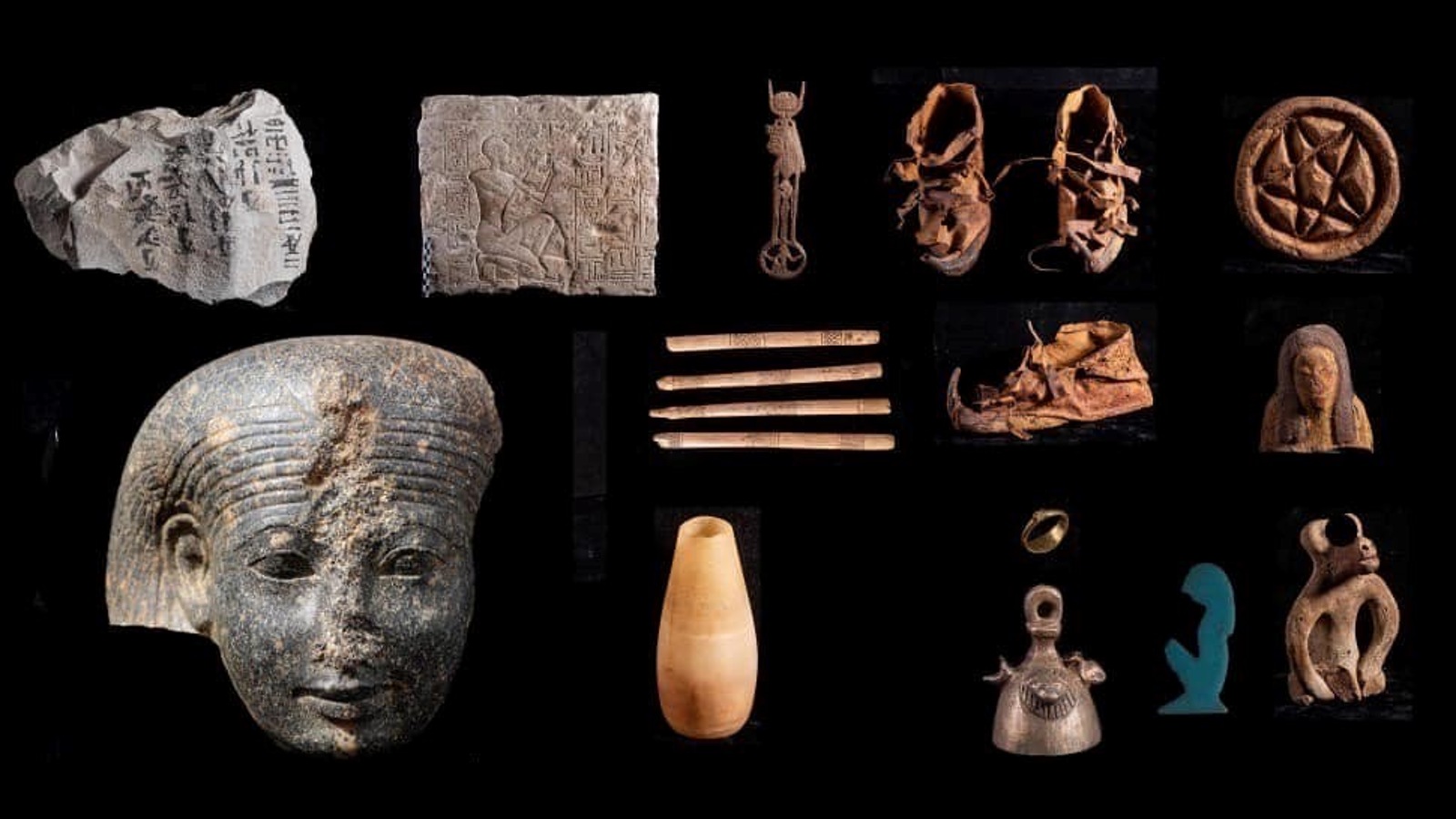
More than 2,000 mummified rams' heads have been unearthed at an ancient temple in Egypt. The severed skulls were likely prepared as an offering to the Egyptian pharaoh Ramesses II, around 1,000 years after he died.
The severed heads were uncovered at the Ramesses II temple in Abydos, an ancient city around 430 miles (692 kilometers) south of Cairo. The temple was built in the honor of Ramesses II, who reigned between circa 1279 B.C. and 1213 B.C. The temple, which was built after the pharaoh's death and does not hold his remains, was discovered over 150 years ago. Its noteworthy features include pillars bearing the depiction of Osiris, a god famous for dying and then coming back to life, and an imposing black stone arch, according to Tour Egypt.
The eerie cranium collection was found by researchers from New York University inside a previously undiscovered ancient storage building in the northern part of the temple, representatives from Egypt's Ministry of Tourism and Antiquities wrote in a translated Facebook post.
Some of the rams' heads were covered in bandages and had been partially preserved, but the majority are now fleshless skulls.
The team also found the remains of goats, dogs, cows, deer and an ostrich at the site. All of the animal remains likely date to around 1,000 years after Ramsses II ruled Egypt and were likely left as an offering to the much-revered king in the afterlife, ministry representatives wrote.
Related: Ancient Egyptian pharaoh-sphinx statues unearthed at sun temple


Ramesses II is renowned for his unusually long 66-year reign and for expanding ancient Egypt's empire while also maintaining alliances with its neighbors. Artwork depicting the pharaoh often shows him as a great warrior king, which is probably why he was so revered so long after his death. However, historical records suggest his military prowess may have been overhyped, according to Britannica.
The ministry said excavations at the temple also revealed another previously unknown building that dates to Egypt's sixth dynasty (circa 2323 B.C. to 2150 B.C.) which predates Ramsses II by around 1,100 years.


The new building has unusually thick walls — around 16.4 feet (5 meters) across — and contains a number of unusual artifacts, including statues, stone slabs, clothing, leather shoes, papyruses and the remains of a tree.
The new building will "greatly contribute to rethinking the activities and architecture of the old state in Abydus," ministry representatives wrote.
This is not the only recent noteworthy discovery tied to Ramsses II. In 2019, a massive 13-ton (11.8 metric ton) sphinx depicting Ramsses II made its public debut after being hidden away for more than a century. In 2021, an elaborate tomb belonging to one of the pharaoh's highest-ranking officials was discovered in Saqqara. And in January, Ramsses II was brought back to life with a stunning facial reconstruction that shows what the ancient king might have looked like in his prime.







